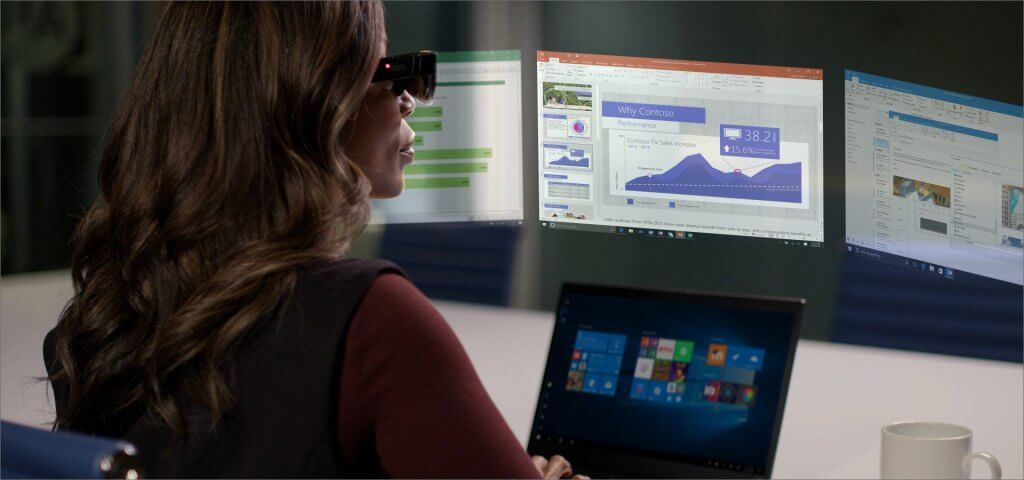The Consumer Electronics Show (CES) has long been an opportunity for the tech world to gather and see the launch of new products. This year, the in-person venue was limited due to the coronavirus pandemic, but many of the offerings were made available online where they will remain available until February 15.
During and in advance of this year’s CES, Lenovo announced a new line of products. The products included new laptop and desktop computers and a new set of AR glasses for enterprise.
ARPost had a front-row seat, as well as an interview with ThinkReality team leaders, including Lenovo’s AR/VR lead Nathan Pettyjohn to learn more about the ThinkReality A3 and where they land in the larger tech ecosystem.
Lenovo and ThinkReality
This year, in and around CES, Lenovo dropped a huge catalog of new hardware for 2021. That includes a 5G IdeaPad, the Tab P11 line of tablets, the Yoga A107 all-in-one desktop, and editions to the ThinkBook, ThinkPad, and Legion product lines.
While all of these are exciting announcements (I’m writing this on a Lenovo IdeaPad), we’re here for the ThinkReality A3. However, as ThinkReality is part of a larger tech ecosystem, the announcements aren’t entirely unrelated.
“We’ll be leveraging several of the new laptops and workstations,” a ThinkReality executive said in a conference call with ARPost following the announcement.
A Look at the New A3
One of the reasons that ThinkReality’s new AR glasses announcement is so exciting is that we already know what ThinkReality can do in enterprise XR. Their A6 model has already been a huge player in enterprise XR and Lenovo offers VR offerings through their reseller program with Varjo.
That’s not to suggest that the new A3 is just a shinier version of the A6. It’s a ground-up redesign based around the Qualcomm XR1. Using this platform allows the AR glasses to offer an almost identical user experience regardless of how the glasses are being used and with what hardware.
The AR glasses feature a “modular design” to allow for personalized fitting, optional safety features, and use with prescription glasses. As of this time, no price estimates on the glasses are publically available.
The A3 comes in two basic versions, the PC Edition and the Industrial Edition.
“The versatility of the A3 is designed for compatibility with PC and select Motorola phones,” Pettyjohn said on the call. Because Motorola is also part of the Lenovo ecosystem, Lenovo is able to offer end-to-end hardware for the ThinkReality platform regardless of whether the user has a PC or mobile use case.
Two Editions for Countless Use Cases
The PC Edition allows a connection to a compatible computer and is largely intended for the use of virtual monitors.
The AR glasses were already being designed for collaboration and coworking before the coronavirus changed the market for AR glasses. With more people working from home, the ability to have three displays with no physical monitor taking up desk space became the focus.

“There are a lot of really interesting things that we envision that we can do with virtual monitors,” said Pettyjohn. “Straight out of the gate, we knew that we wanted to make sure that we’ve nailed that first 2D monitor experience.”
The Industrial Edition is focused more on turnkey applications with custom content specifically angled toward guided workflow, remote assistance, and 3D visualization. It connects with compatible Motorola phones on a belt-clip for convenient, safe, and comfortable long-term wear. It also comes available with industrial lenses and side shields for use in non-office settings.
What Would You Do With Three Virtual Monitors?
In addition to being some of the most exciting XR news to come out of CES this year, the A3 is a significant example of how XR technology is responding to the COVID-19 pandemic by doing more or less exactly what it was before.
While AR glasses were always going to be the future of work, the A3 is a huge step forward in changing the way that non-frontline work is done by using XR to overcome the limitations of workspace.




